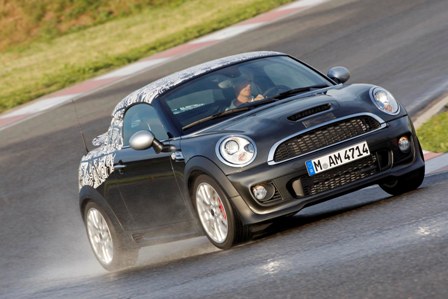When Cars Had Muscles, Pontiac Ruled The Road
The General Motors brand blazed the muscle car trail, but now that fast lane has come to an end Rick Holloway always wanted a muscle car.
He dreamed of being behind the wheel of a car with a curved, sleek body, powered for speed with an oversized engine.
Twenty years ago, the lure of the cameo white 1971 Firebird Trans Am was so strong, Holloway flew to Canada to get it. He then drove it back to his Waterford home, destined, though he did not know it at the time, to renege on a promise to his wife to flip it for a profit. Instead, he kept it and continues to restore it.
”Anybody that has a muscle car, it’s about ego,” said Holloway, now in his 60s. “I love sitting behind the wheel of that car, driving down the highway, even doing the speed limit, and watching people watch me go by. It just brings you back to when you were a young kid again. You’ve got some serious horsepower there, and once in a while you get on it, and when you do, it just books.”
The Pontiac line, once home to such iconic brands as the Firebird, Trans Am and GTO – is going away, discontinued by 2010 as General Motors continues to slash expenses to avoid bankruptcy.
In Connecticut, the Charter Oak Firebirds and Connecticut GTO Club have about 50 members each dedicated to their respective models. They go to competitive shows and cruise nights around the state, nurturing a love affair with a cultural phenomenon that soon will have seen its day.
Another collector, Larry Erhart of Gales Ferry, has a 1978 Pontiac Trans Am black-and-gold special edition tribute car. He bought it “sight unseen” for $6,500 after reading about it in an internal classified ad at Pfizer Inc., where he used to work. He also owns a 1969 Firebird, purchased in 2002.
The Firebird “was a car I always wanted,” Erhart said. “In high school, you used to see them cruising the Berlin Turnpike (in Newington). That’s what you did then. Gas was cheap. Hot August nights. You went to the drive-in. It was fun stuff to do.”
Part of the reason for Pontiac’s demise is that today’s car lovers have veered away from GM, opting instead for brands reputed to get better mileage. In fact, Erhart’s everyday vehicle is a 2007 Honda Accord – it gets 35 miles to the gallon.
”I’m a regular guy trying to save gas like everybody else,” he said. “But these are collector cars. They’ll never make these cars again, and I think that’s part of the allure, the mystique. It’s the nostalgia, part of Americana that will never be again.”
Cars built for speed
The Pontiac muscle car has a storied history, marked by the emergence of the 1964 GTO. Jim Wangers, known as “the Godfather of the GTO,” likes to tell how he helped market the muscle car after John DeLorean concocted the idea of upending GM’s conservative engineering formula, and stuffing a 389-cubic-inch V-8 engine into the Tempest, a mid-sized LeMans. The GTO sold for $2,600.
”It was a car built for the street as opposed to a race car,” Wangers, of Oceanside, Calif., said in a recent phone interview. “A cruising car. We literally snuck the car into the marketplace. Instead of making it a model, we made it an option.”
Five thousand orders from dealers quickly swelled to 15,000 and GM couldn’t turn away from what looked like a clear winner.
”It was really a very serious, aggressive performing car,” Wangers recalled, “a car with a lot of muscle. And there was no question about it, the cars were fast, they were significantly faster than anything that had been offered at that time for the price.”
”It answered a lot of pent-up demand,” acknowledged Eddie Alterman, editor-in-chief of Car and Driver Magazine. “It made Pontiac seem like this total maverick brand.”
Pontiac couldn’t be saved
In later years, the Firebird and Trans Am would be popularized in television and film. Burt Reynolds’ flight from Jackie Gleason’s bumbling sheriff in the 1977 movie “Smokey and the Bandit” was made in a Trans Am. And private eye Jim Rockford of “The Rockford Files” relied on a Pontiac Firebird.
The absorption into popular culture was “not only a muscle car movement but a movement for youth and greater freedom and personal expression toward a person’s automobile,” Alterman said. “It’s all part of the car as a reflection of who the driver is that continues to this day.”
Wangers took marketing a step further, getting Thom McCann to market a GTO shoe to young people. Wangers also convinced the pop band The Monkees’ to outfit the GTO as their Monkee Mobile, and he merchandised car sweepstakes on the back of Kelloggs cereals boxes targeted at kids chomping on Rice Krispies and Raisin Bran.
However, before foreign brands such as Toyota would gain a reputation for greater fuel efficiency and reliability, the Pontiac muscle cars developed problems of their own. Emissions standards and insurance companies’ high-risk ratings put a dent in the models’ popularity, Wangers said.
Fast forward to 2009 and the foundering “viability plan” of GM, an automotive giant that Wangers says in its heyday was threatened by the U.S. Justice Department because it had a better than 50 percent share of the U.S. market.
Earlier this year, as it continued to borrow billions from the American taxpayer to preserve Chevrolet, Cadillac, GMC and Buick, GM also had hoped to save the Pontiac brand, said Jim Hopson, GM’s Pontiac communications manager. The Obama administration rejected that plan as not aggressive enough, he said.
”We tried many different combinations of things, but given the resources we were expected to work with, we simply could not do what was right by the brand,” Hopson said. “If you strip the emotions out of it, it was a necessary business decision. It’s sad that it’s come to this, and anyone who has devoted any length of time to the brand is going to feel the same way.”
Alterman, the magazine editor, said the platform of the new 2009 Pontiac G-8, doomed by the tanking economy, is being used for the Chevrolet Camaro, that brand’s muscle car.
”Is the DNA of the Pontiac going to live on in the body of the Chevy? I don’t know if you could say that conclusively,” he said, “but affordable performance cars are going to come out of Chevrolet. So Pontiac, though it’s dead in name, will live on in some form.”
In Connecticut, the presidents of the Charter Oak Firebirds and the Connecticut GTO Club say parts are likely to remain plentiful from antiques parts suppliers for the 1960s and 1970s-era roadsters. And the cars’ value, if the economy recovers, is likely to rise.
”It was all about the look back then,” said Rob Heim of East Hartford, the president of the Connecticut GTO Club. “I just think the nostalgia’s going to be really pushing it now.”
Sourced via theday.com







